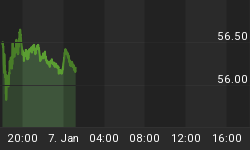11/29/2010 9:03:36 AM
The bears took advantage after the bullish run-up on Wednesday to take the bulls down a notch on Black Friday...
Recommendation:
Take no action.
Daily Trend Indications:

- Positions indicated as Green are Long positions and those indicated as Red are short positions.
- The State of the Market is used to determine how you should trade. A trending market can ignore support and resistance levels and maintain its direction longer than most traders think it will.
- The BIAS is used to determine how aggressive or defensive you should be with a position. If the BIAS is Bullish but the market is in a Trading state, you might enter a short trade to take advantage of a reversal off of resistance. The BIAS tells you to exit that trade on "weaker" signals than you might otherwise trade on as the market is predisposed to move in the direction of BIAS.
- At Risk is generally neutral represented by "-". When it is "Bullish" or "Bearish" it warns of a potential change in the BIAS.
- The Moving Averages are noted as they are important signposts used by the Chartists community in determining the relative health of the markets.
Current ETF positions are:
In cash.
Daily Trading Action
The major index ETFs opened markedly lower and after a quick trip lower in the opening minutes moved higher for most of the next hour reversing from an intraday high just before 10:30am and headed lower into the late morning. A rally began about twenty minutes before noon and it lost momentum by twenty minutes after noon with the major indexes moving modestly lower into the 1:00pm close. The ETFs that represent the major indexes then moved markedly lower and settled significantly lower in the next forty-five minutes. Normally, the rules allow trading of the index ETFs for fifteen minutes after the markets close. It was unusual to see such a wide swing for the ETFs and for a period beyond the normal fifteen minutes but there must have been an exception made by the exchanges for the holiday shortened session. Still, it looked a little nefarious to have such a large move after the close.
The Semiconductor Index (SOX 396.03 -2.68) posted a fractional loss as did the Russell-2000 (IWM 7322 -0.51) with both easily outperforming the major indexes. The bank indexes moved lower with the Bank Index (KBE 22.15 -0.20) lost nearly one percent while the Regional Bank Index (KRE 22.60 -0.46) posted a two percent loss! KRE had run higher in the first half hour of trading but then collapsed the rest of the session posting the worst loss of the equity indexes we regularly monitor. The 20+ Yr Bonds (TLT 97.07 +1.33) posted a gain of 1.4% erasing most of Wednesday's losses. NYSE volume was anemic with just 413M shares traded. NASDAQ volume was also anemic with just 613M shares traded.
There were no economic reports of interest released. Instead, there were renewed concerns over the Irish sovereign debt bailout from the ECB and IMF as well as what might happen with North Korea stating that it may attack South Korea again.
The U.S. dollar (+0.6%) continued to move higher as it once again new two month highs closing at the level last seen on September 23rd.
All ten economic sectors of the S&P-500 moved higher led by Industrials (+2.1%). Retailers (+2.6%) were especially strong heading into the official start of the holiday shopping season and have been relative strength leaders for three consecutive sessions.
Implied volatility for the S&P-500 (VIX 22.22 +2.66) soared nearly fourteen percent while the implied volatility for the NASDAQ-100 (VXN 20.84 -0.01) was flat.
The yield for the 10-year note fell five basis points to close at 2.86. The price of the near term futures contract for a barrel of crude oil fell ten cents to close at $83.76.
Market internals were negative with decliners leading advancers 2:1 on the NYSE and by 7:4 on the NASDAQ. Down volume led up volume nearly 5:1 on the NYSE and by nearly 2:1 on the NASDAQ. The index put/call ratio fell 0.86 to close at 1.04. The equity put/call ratio rose 0.14 to close at 0.66.
Commentary:
Wednesday's trading showed some curious anomalies as the NASDAQ-100 closed down -0.3%, the Dow closed down -0.8%, and the S&P-500 closed down -0.9%. The anomalies were the closes for the Index ETFs which are supposed to mimic the indexes, which after the close of the exchanges were allowed to trade aggressively lower for forty-five minutes and closed down most of -0.7%, -1.1%, and -1.2% respectively. The trading activity after the close looked nefarious and we aren't aware of a special rule which allowed the ETF close to be recorded more than fifteen minutes after the close of the regular session. While it wouldn't surprise us to have the SEC asleep on watch, it was a significant move and significantly out of character. We are interested in determining an adequate explanation for the aberration but aren't secure it will ever be offered.
Given the U.S. dollar's continued move higher, we would like to see a failure of that move higher after a gap up at the open of trading on Monday. We think that a halt in the move higher is likely for the dollar which could allow equities to rally here. Until then, sit in cash and keep your powder dry.
We hope you have enjoyed this edition of the McMillan portfolio. You may send comments to mark@stockbarometer.com.















